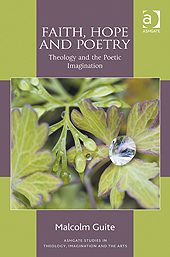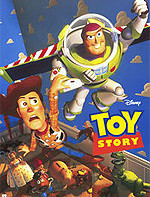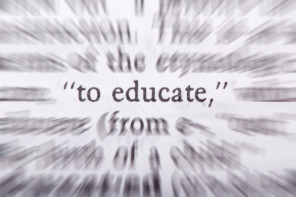
Transposition is very much what poetry and all literary art is about. To hear snatches from the huge unknowable symphony of experience, to catch them and transpose them to a key that resonates with our understanding, so that at some point they harmonise with that unheard melody from heaven we are always trying to hear, that is the purpose of poetry (23).
In his 2010 monograph Faith, Hope and Poetry: Theology and the Poetic Imagination, part of the Ashgate Studies in Theology, Imagination, and the Arts, Malcolm Guite, “explores the poetic imagination as a way of knowing; a way of seeing reality more clearly.” He considers poetry to be truth-bearing; as being particularly able to convey theological truth – the ‘word made flesh.’
Malcolm Guite is poet, priest and academic living and working in Cambridge. In Faith, Hope and Poetry, he lays out a schema to detail the ideological separation of reason and imagination followed by an exploration of “key moments in English poetry (not necessarily explicitly Christian or ‘religious’ poetry) which opens the reader to an experience of transfiguration or enhanced insight into the world as it is” (2). Guite takes a quick journey through the Enlightenment, Derrida and postmodernism, and considers the divide between imagination and reason. Light, faith, restoration (including replenishment) and (in)sight, the tradition of the Rood (cross) and the images representing Faith and Doubt are the metaphors most significantly explored and revisioned by Guite.
Guite seeks to read a number of poets in a new light including George Herbert, Samuel Coleridge, Phillip Larkin and Seamus Heaney. Guite lays out theology of imagination and seeks to provide “unique insights into truth which complement and enrich more strictly rational ways of knowing.” There is a sense in which Guite’s determination that balance must be restored and that poetry can provide that redress relies heavily on the assertion of poetry’s particular potential for truth-bearing. Rather than the metaphor obscuring knowledge, poetry can reveal and can in fact be a way through which we can know.
Of Faith, Hope and Poetry, Ashgate’s website says:
Malcolm Guite applies the insights of poetry to contemporary issues and the contribution poetry can make to our religious knowing and the way we “do Theology”. […] Readers of this book will return to their reading of poetry equipped with new insights and enthusiasm and will be challenged to integrate imaginative ways of knowing into their other academic and intellectual pursuits.
Between this assertion of the landmark quality of this work and reviews by The Most Revd Dr Rowan Williams, Professor Steven Sykes, and Luci Shaw, which were glowing, I was really hoping to be bowled over by Guite.
Faith, Hope and Poetry is an erudite work. Well-researched and heavily annotated even as Guite declares that he’s not offering a summary of the secondary literature of the poems he’s re-reading. But what drew me in was his intent to go beyond merely stating a theology of the imagination to express some “criteria” or boundaries for what might cause a reader or an artist to fall into idolatry and “unhelpful fantasy” even as he as tries to give expression to the idea that the imagination “give us our only possible apprehensions of the Kingdom of God.” Guite offers five ways into reading poetry which may be of some use. I’ll merely give the titles and a very brief explanation here:
- Tasting the Words – a version of the slow food movement for poetry reading, Guite advocates speaking aloud somewhat in the manner of Lectio Divina with the encouragement that we should inwardly digest for nourishment and that we might in turn create.
- Echo and Counterpoint – seeking out the internal tensions and intertextuality inherent in a poem or the work of a specific poet.
- Images and Allusion – As echo and counterpoint is to words, images and allusions are to, well, images. This is about interplay within the work of a poet and in the context of the broader tradition at hand.
- Ambiguity and Ambivalence – Guite is encouraging an openness to the possibility of more than one voice with different ends. He is especially aware of the way in which poetry can express both faith and doubt in one single moment and the way in which poetry can give expression to an honest acknowledgment of frustration and hope, of the fruits of faith and the despair of doubt.
- Perspective and Paradox – Guite wants the reader to be open to seeing poetry as an opportunity to read from the perspective of another and to feel the weight of those tensions of image and word coming alive in the expression of another way of seeing and knowing.
Guite moves almost effortlessly from T.S Elliot to Dante, to Cicero, Chaucer, John Donne, John Milton, to George Herbert to C.S. Lewis, Shakespeare, Thomas Hardy, Phillip Larkin, Geoffrey Hill, and Seamus Heaney. The sheer breadth and significance of the poets he traces his ideas through is ambitious to say the least. Guite’s reading of Larkin’s “Church-Going” is particularly poignant and was particularly striking for me in light of my post on Les Murray’s “Church” last week. For a lover of poetry it is a feast, for someone intrigued by poetry and theology, it is indeed a landmark work. I’m sure scholars of Coleridge, Milton and Shakespeare may find the lack of engagement with the secondary literature to be a limitation and it may be here that we find Guite’s work does not achieve the kind of scholarly acknowledgment that it might have had he limited his gaze somewhat. But there’s something extraordinary about the freshness of his readings of such statuesque figures of the English literary tradition.
Besides, Guite cares about Truth. As a poet and as a reader.
And that is rare fruit indeed.




